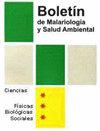基于天然精华的肥皂对埃及伊蚊的驱蚊效果
Q4 Immunology and Microbiology
引用次数: 0
摘要
寻找控制埃及伊蚊传播各种虫媒病毒疾病的替代品对公共卫生至关重要。作为一个目标,提出了测定基于天然精华的肥皂对埃及伊蚊的排斥性和保护时间的有效性。这项研究是描述性实验。研究了三种由20%提取物+中性液体肥皂制成的肥皂(薄荷L,薰衣草)和一种混合的肥皂(薰衣草+香草),作为阳性对照商业驱蚊剂OFF(20%避蚊胺)和70%酒精作为阴性对照。使用的蚊子种群为50只埃及伊蚊(新奥尔良株)雌性,志愿者为5名25-35岁的男性。数据存储在Microsoft Excel中,并用SPSS进行处理,计算排斥率(PRp)、保护率(PP)或排斥效率和叮咬/天。结果,Mint皂的(PP)在min1时为100%,在min60时为12%,在min120时为25%,Lavender皂在min1、min60和min120时分别具有100%、72%和20%的保护性,Lavender+Vanilla皂在minl、min60、min120时具有100%、99%和87%的排斥性。总之,这项研究的结果表明,用从植物中提取的精华液取代合成驱虫剂是可能的,然而,在秘鲁登革热、寨卡病毒和基孔肯雅病毒病例不断增加的各个地区继续进行研究是至关重要的。本文章由计算机程序翻译,如有差异,请以英文原文为准。
Efectividad de repelencia de jabón a base de esencias naturales contra mosquitos Aedes aegypti
Finding alternatives for the control of Aedes aegypti transmitter of various arboviral diseases is essential in public health. As an objective, it was proposed to determine the effectiveness of repellency and protection time of soaps based on natural essences against Ae. aegypti. The study was descriptive-experimental. Three soaps made with 20% of the extract + Neutral liquid soap (Mentha piperita L, Lavandula angustifolia) and one mixed (Lavandula angustifolia + Vanilla planifolia) were studied, as a positive control commercial repellent OFF (20% DEET) and 70% alcohol were used. % as Negative Control. The mosquito population used was 50 females of Aedes aegypti (New Orleans strain), the volunteers were 5 men between 25-35 years old. The data was stored in Microsoft Excel and processed with SPSS, Percentage repellency (PRp), Percentage protection (PP) or repellent efficiency and bites/day were calculated. As a result, the (PP) of the Mint soap was 100% at min1, 12% at min60 and 25% at min120, the Lavender soap had 100% protection at min1, 72% at min60 and 20% at at min120, the Lavender+Vanilla soap had a % repellency of 100% at min 1, 99% at min 60 and 87% at min 120. In conclusion, the findings of this study suggest the possibility of replacing synthetic repellents with repellents with essences extracted from plants, however, it is essential to continue with research in various areas of Peru where cases of dengue, Zika and Chikungunya are increasing.
求助全文
通过发布文献求助,成功后即可免费获取论文全文。
去求助
来源期刊

Boletin De Malariologia Y Salud Ambiental
INFECTIOUS DISEASES-PARASITOLOGY
CiteScore
0.40
自引率
0.00%
发文量
51
期刊介绍:
Information not localized
 求助内容:
求助内容: 应助结果提醒方式:
应助结果提醒方式:


